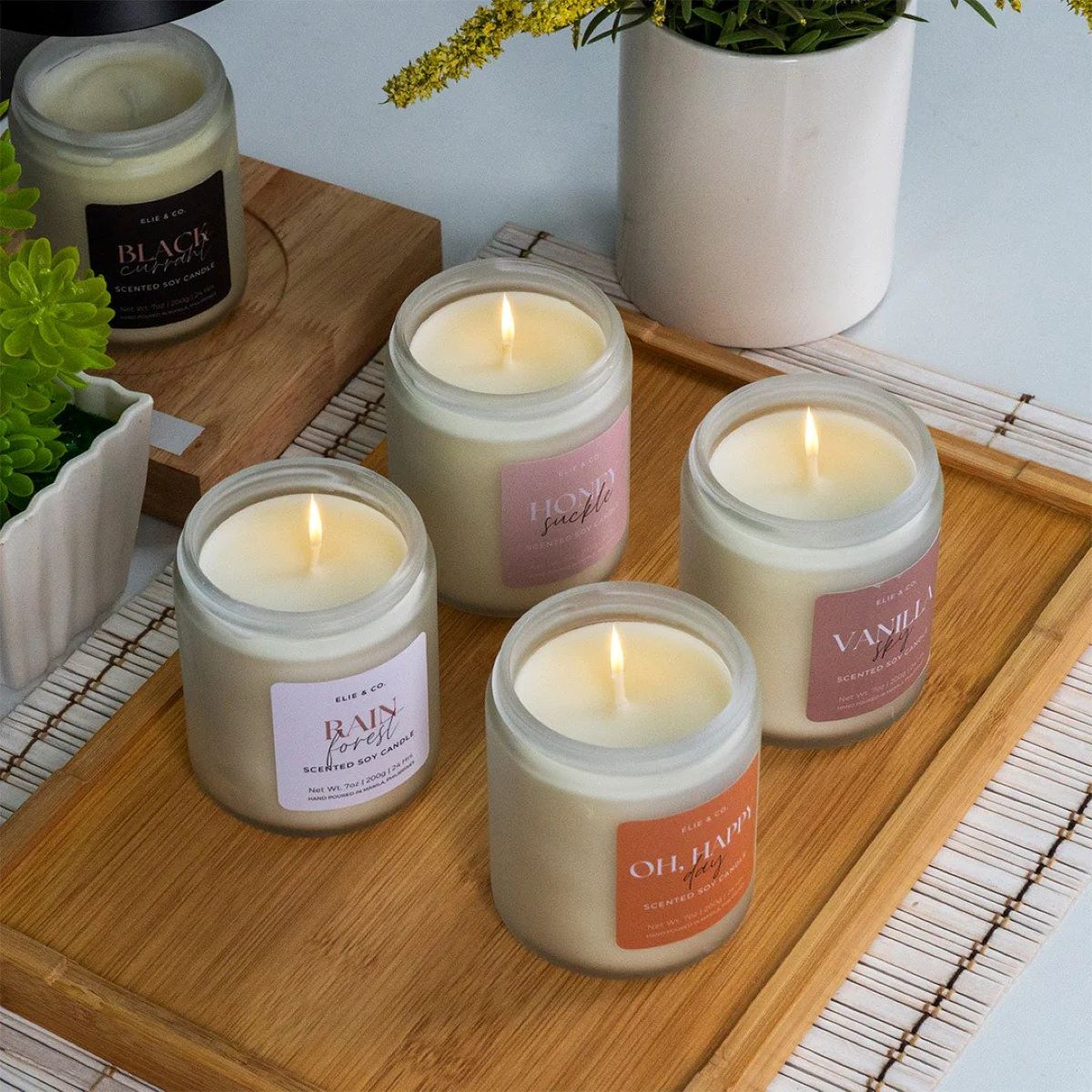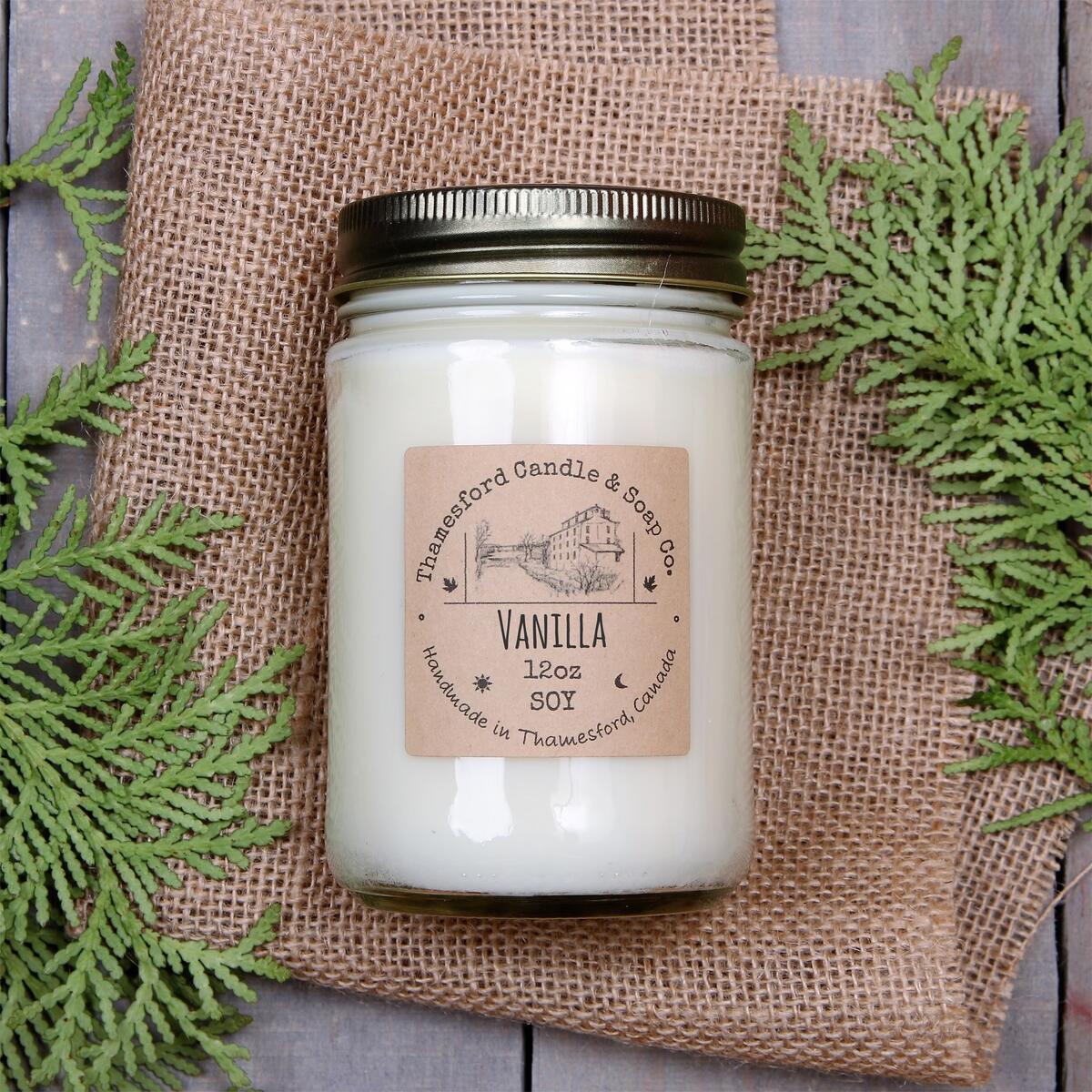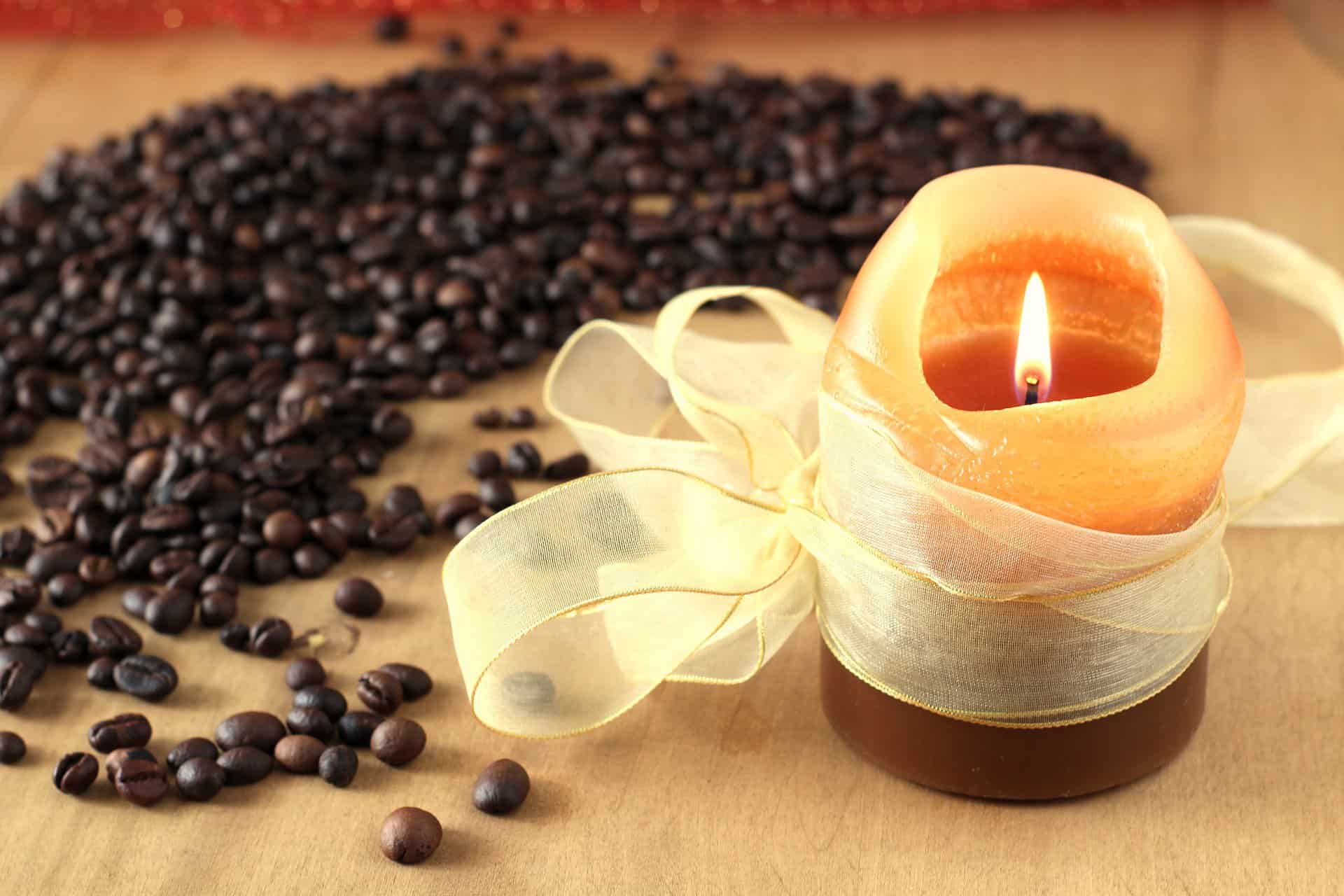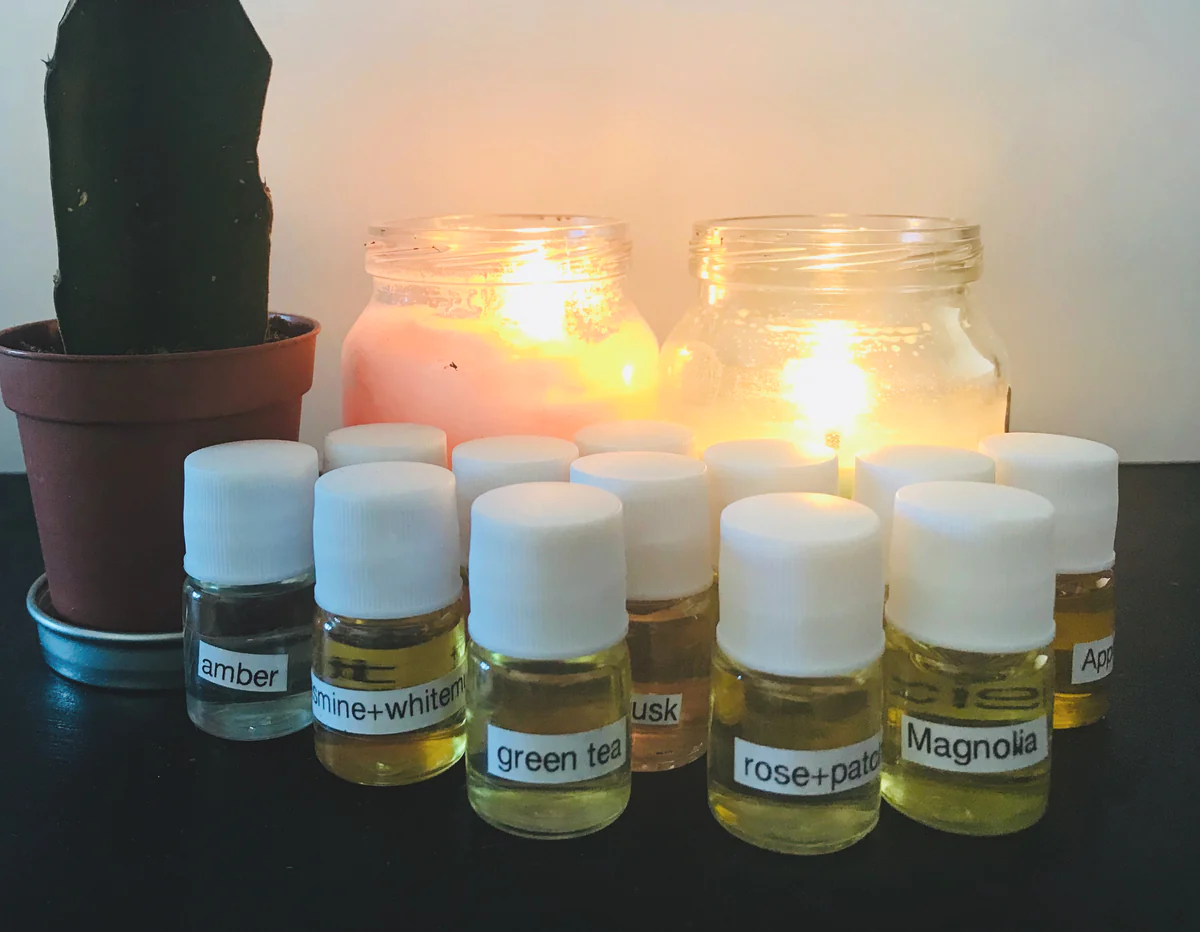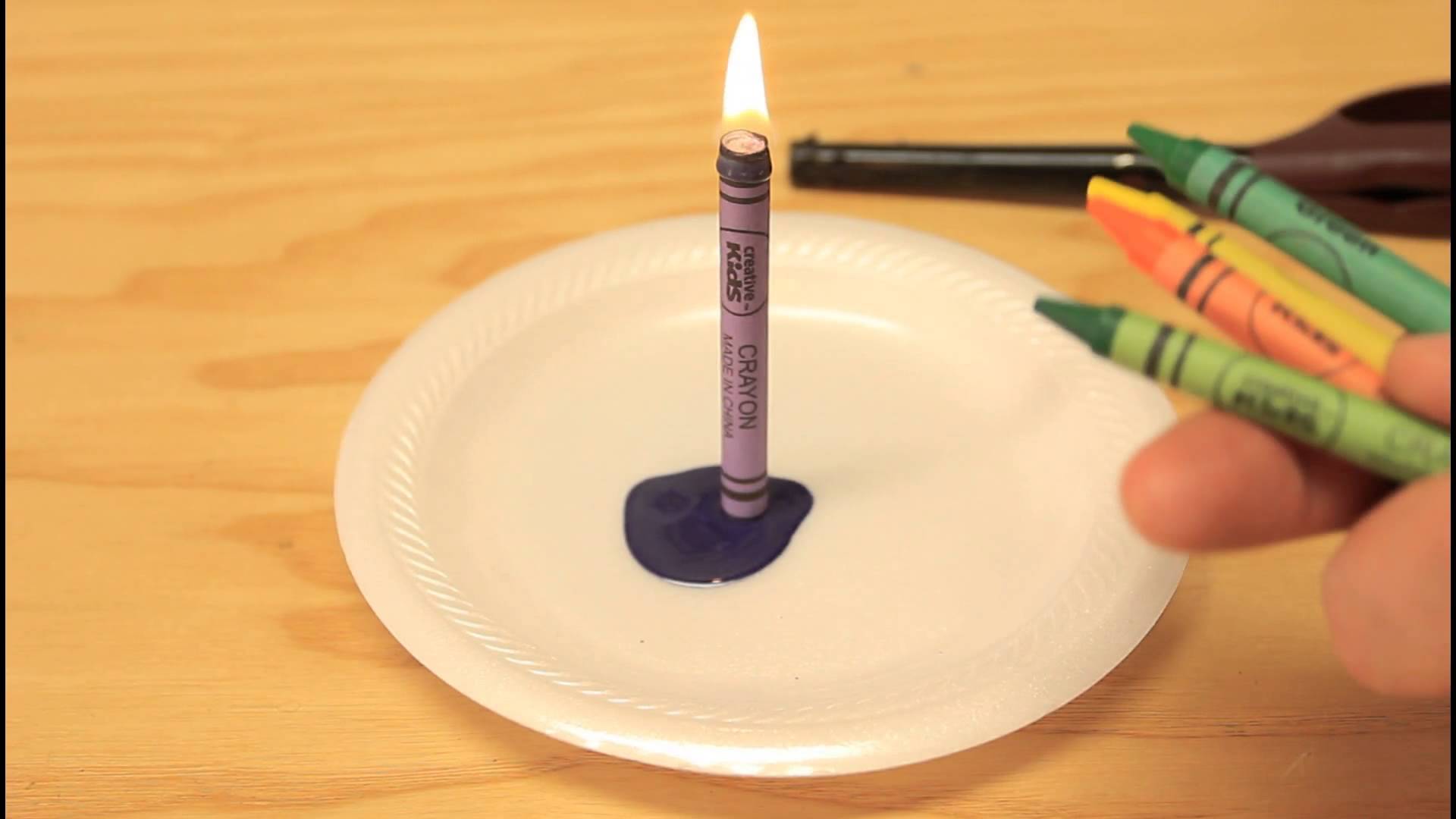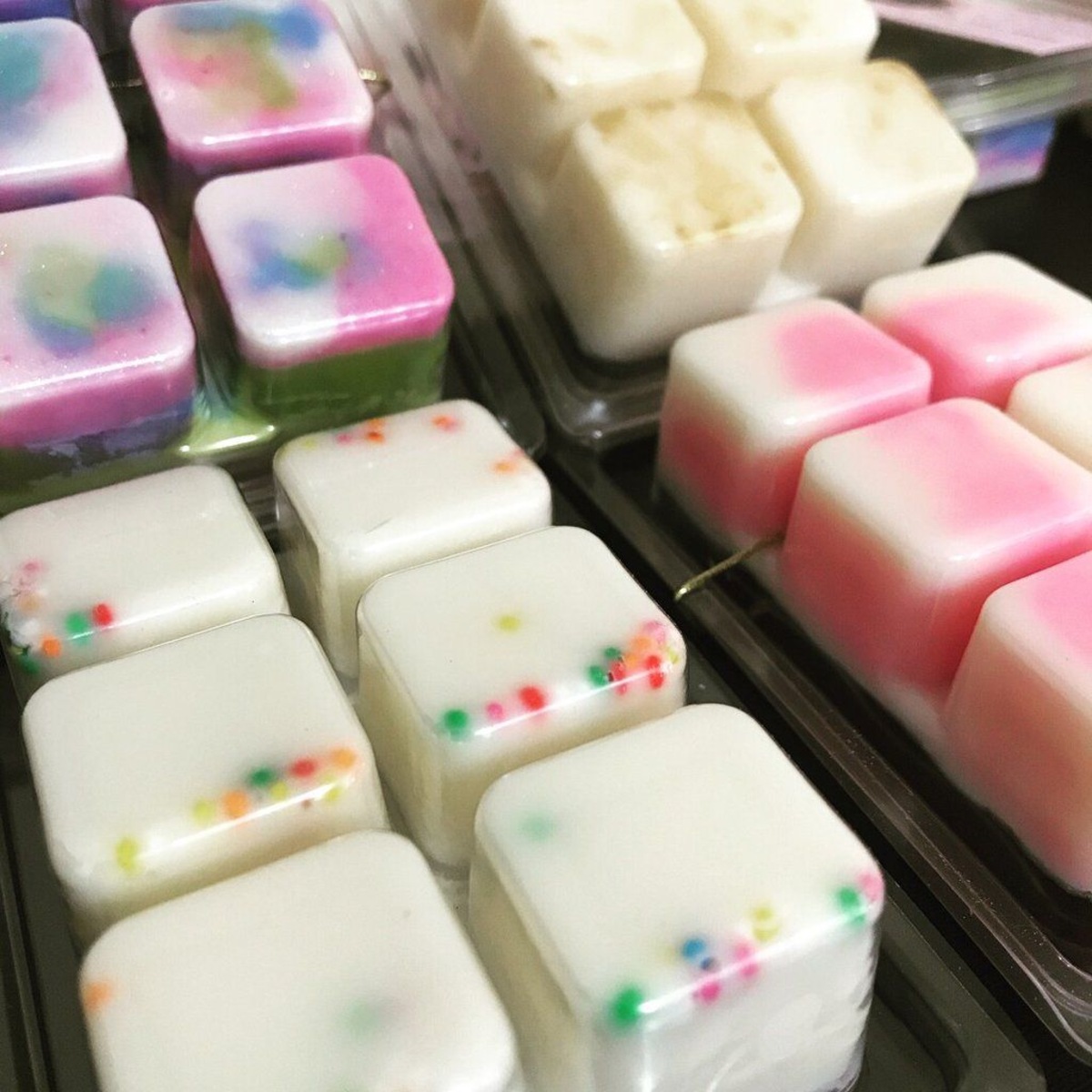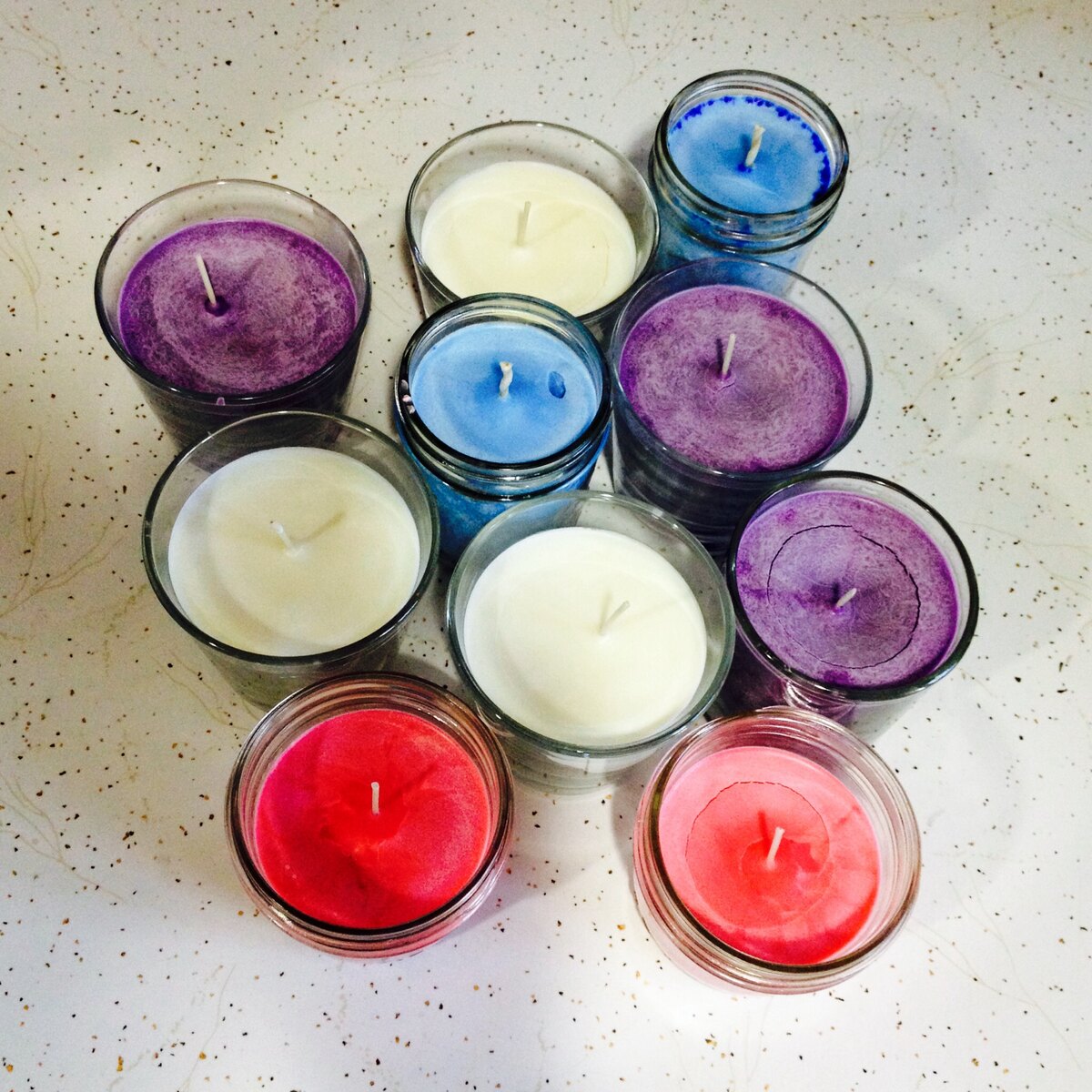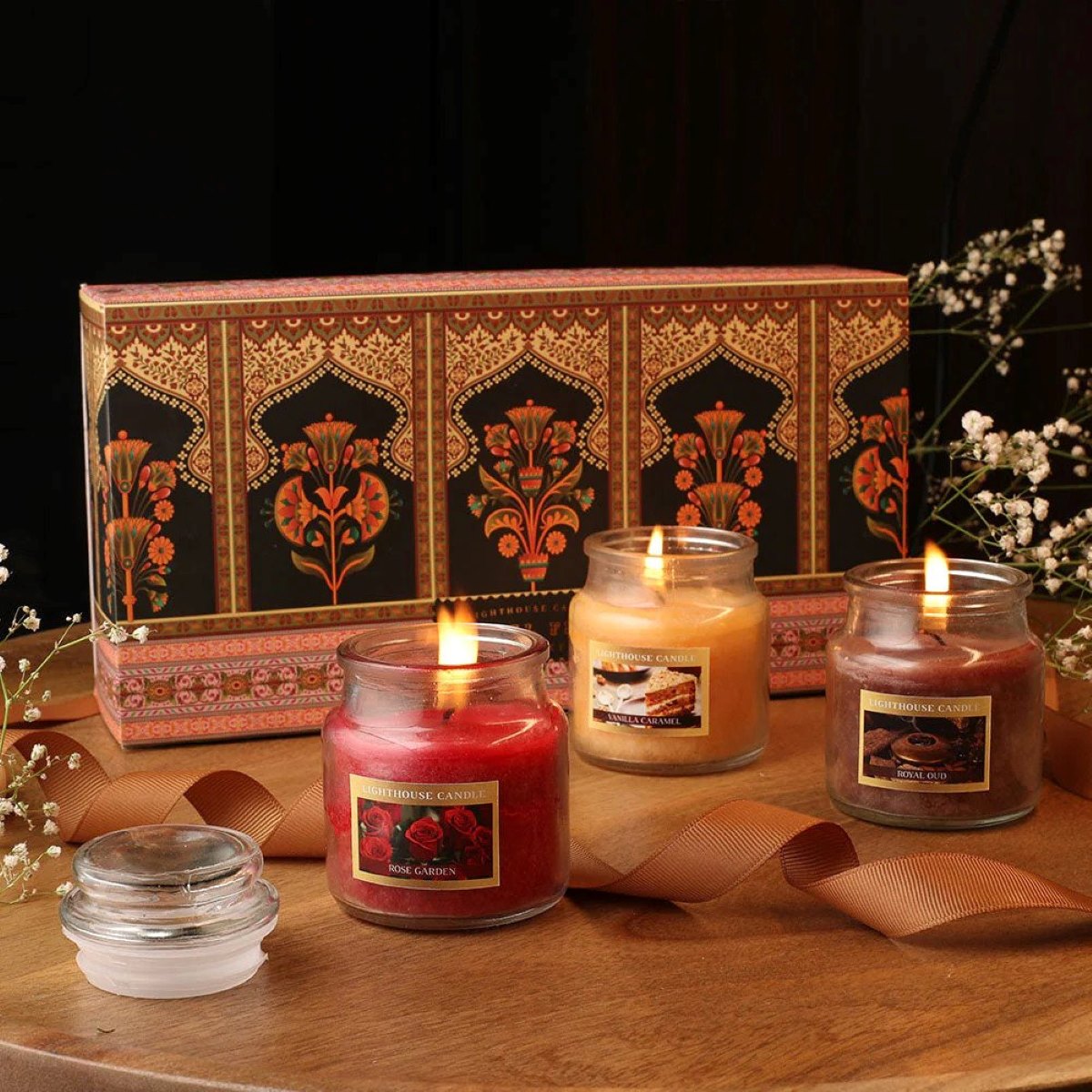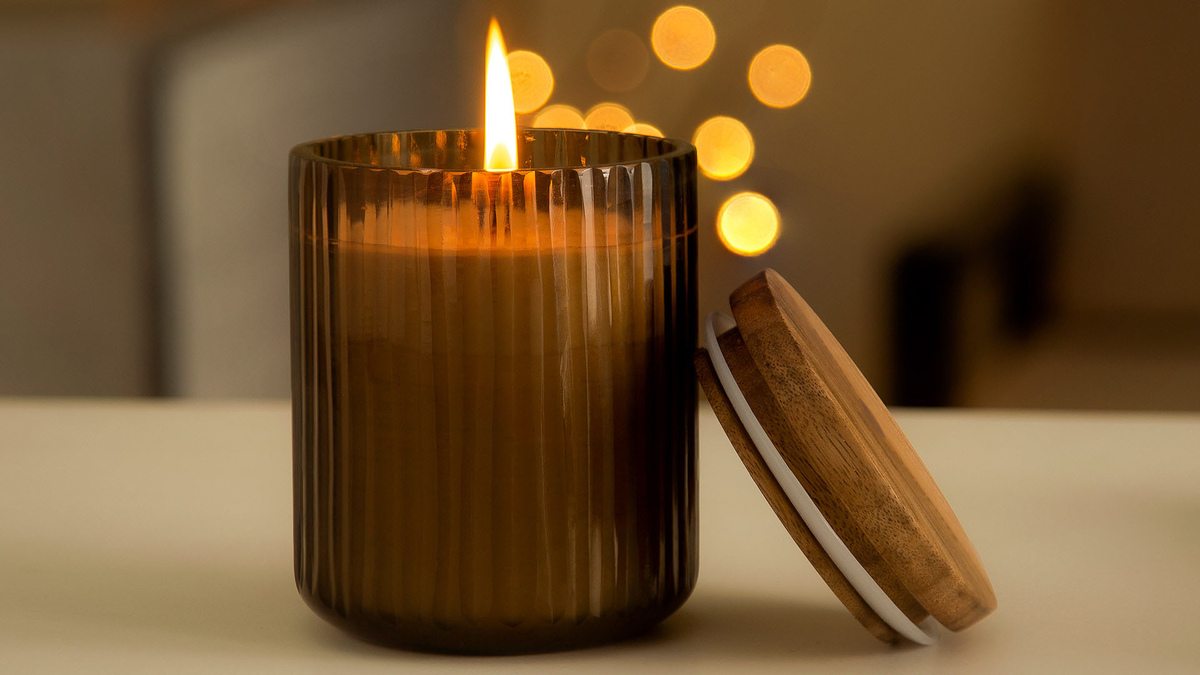

Articles
How Does Scented Candles Work
Modified: January 9, 2024
Learn how scented candles work and discover the science behind their soothing aromas with our informative articles.
(Many of the links in this article redirect to a specific reviewed product. Your purchase of these products through affiliate links helps to generate commission for Storables.com, at no extra cost. Learn more)
Introduction
Welcome to the fascinating world of scented candles! These delightful creations have been a favorite among individuals for centuries, instantly transforming any space into a tranquil and aromatic oasis. But have you ever wondered how scented candles work their magic? How is it possible for a simple wax candle to release such captivating fragrances that evoke a sense of calm and relaxation?
In this article, we will dive into the mechanics of scented candles, exploring the components that contribute to their enticing aromas. From the type of wax used to the role of fragrance oils, we will uncover the science behind these beloved items. So, grab a cup of your favorite beverage, light up a scented candle, and let’s unravel the mystery of how they work.
Before we delve into the specifics, it’s important to understand that scented candles are crafted with meticulous attention to detail. Each element is carefully selected to ensure optimal scent dispersal and a long-lasting, enjoyable experience. So let’s explore the basic components that come together to create the magic of scented candles.
Subtitle: The Basics of Scented Candles
Key Takeaways:
- Dive into the captivating world of scented candles and unravel the science behind their enchanting aromas, from wax selection to fragrance dispersal, for a truly immersive sensory experience.
- Embrace the soothing ambiance of scented candles while prioritizing safety and dispelling common myths, allowing you to fully appreciate their therapeutic benefits and delightful fragrances.
Read more: How To Make Scents For Candles
The Basics of Scented Candles
Scented candles are more than just a pretty ornament. They are carefully designed to emit captivating fragrances when ignited. The key components of a scented candle include the wax, fragrance oils, and the wick. Let’s take a closer look at each of these elements and their roles in creating the delightful aromas that fill the air.
1. Wax: The type of wax used in a scented candle plays a crucial role in its performance. The most common types of wax used are paraffin wax, soy wax, and beeswax. Paraffin wax is widely used due to its affordability and ability to hold fragrance well. It burns slowly and provides a consistent flame. Soy wax, on the other hand, is derived from soybeans and is considered a more eco-friendly alternative. It has a cleaner burn and allows for better scent throw. Beeswax, though more expensive, offers a natural and subtle fragrance along with a clean burn.
2. Fragrance Oils: Fragrance oils are what give scented candles their alluring smells. These oils are specifically formulated to be safe for use in candles and are available in a wide range of scents. They are carefully blended to create the desired aroma, whether it be floral, fruity, or woody. When the candle is lit, the heat from the flame causes the fragrance oils to vaporize and disperse into the surrounding air, filling the space with a pleasant scent.
3. Wick: The wick of a scented candle is responsible for carrying the flame and ensuring a consistent burn. It is usually made of cotton, which is a popular choice due to its clean and even burn. The size and thickness of the wick can impact the scent throw and burn time of the candle. A properly sized wick will allow for an optimal scent release without causing excessive smoking or tunneling.
In addition to these essential components, scented candles may also incorporate dyes or colorants to enhance their visual appeal. However, it’s important to note that the coloring agents do not play a role in the scent release.
Now that we have a better understanding of the basic elements of scented candles, let’s explore the science behind how the fragrances are dispersed into the air.
The Role of Wax in Scented Candles
When it comes to scented candles, the type of wax used is a crucial factor that influences not only the candle’s performance but also its ability to release fragrance effectively. Different waxes have different burning properties, which in turn affects the way scented candles work. Let’s take a closer look at the role of wax in scented candles.
1. Paraffin Wax: Paraffin wax is the most commonly used wax in scented candles. It is a byproduct of petroleum and offers several advantages. First and foremost, paraffin wax has a low melting point, which means it melts quickly when the candle is lit. This allows the fragrance oils to vaporize and release their scent into the air. Moreover, paraffin wax has a good scent throw, meaning it can carry and disperse the fragrance effectively.
2. Soy Wax: In recent years, the popularity of soy wax has surged due to its eco-friendly nature. Soy wax is made from soybean oil, making it a renewable and sustainable choice. Soy candles have a cooler burning temperature compared to paraffin candles, which means that the fragrance release may be more subtle. However, soy wax has excellent scent retention, which means that the fragrance will remain consistent throughout the burning process.
3. Beeswax: Beeswax is a natural wax produced by bees and is known for its clean burn and subtle scent. It has a higher melting point compared to paraffin wax, resulting in a longer burn time. While beeswax candles may have a more limited variety of scents available, they offer a natural and calming fragrance that many people find appealing.
It’s important to note that some scented candles may also combine different types of wax to optimize their performance. For example, a candle may contain a blend of paraffin wax and soy wax to balance fragrance throw and burn time.
In addition to the type of wax, the size and shape of the candle also play a role in its performance. A larger candle may have a greater capacity for fragrance load, resulting in a stronger scent throw. Similarly, container candles, where the wax is poured into a container, tend to have a better scent release as the container helps to trap and concentrate the fragrance.
Understanding the role of wax in scented candles is essential for making informed choices when purchasing or making scented candles. Whether you prefer the affordability and versatility of paraffin wax or the eco-friendly aspect of soy wax, each type offers its own unique qualities that contribute to the overall scented candle experience.
Now that we have explored the role of wax, let’s move on to the next essential component in scented candles – fragrance oils.
Fragrance Oils and Their Importance
Fragrance oils are the heart and soul of scented candles. These specially formulated oils are what give scented candles their enticing aromas and play a crucial role in creating a delightful sensory experience. Let’s delve into the world of fragrance oils and understand their importance in scented candles.
1. Creating the Desired Aroma: Fragrance oils are carefully crafted blends of various aromatic compounds, essential oils, and synthetic fragrances. They are meticulously designed to capture the essence of different scents, whether it’s a floral bouquet, a citrus burst, or a cozy vanilla aroma. These oils play a vital role in replicating the desired scent and creating the ambiance that scented candles are known for.
2. Scent Throw: The term “scent throw” refers to the ability of the candle to release its fragrance into the surrounding space. Fragrance oils determine the strength and intensity of the scent throw. High-quality fragrance oils are formulated to disperse evenly and effectively when the candle is lit, filling the room with their captivating aromas. The right combination of fragrance oils ensures an optimal scent throw that can enhance the ambience and create a memorable experience.
3. Variety and Versatility: One of the most exciting aspects of fragrance oils is the wide range of scents available. From fresh and floral to warm and spicy, fragrance oils offer an extensive selection to suit diverse preferences. Whether you prefer the soothing scent of lavender, the invigorating aroma of citrus, or the cozy fragrance of cinnamon, there is a fragrance oil to satisfy every mood and occasion. Additionally, fragrance oils can be blended to create unique and custom scents, allowing for endless possibilities and personalization in scented candles.
4. Long-Lasting Fragrance: Another advantage of fragrance oils is their ability to provide a long-lasting fragrance experience. Due to their concentrated nature, a small amount of fragrance oil can go a long way, allowing the scent to linger even after the candle has been extinguished. The quality of the fragrance oils used directly impacts the longevity of the scent, ensuring that you can enjoy the enticing aroma of a scented candle for hours on end.
5. Safety and Regulatory Compliance: Fragrance oils used in scented candles are carefully formulated to meet safety standards and regulations. Reputable manufacturers ensure that their fragrance oils are free from harmful substances, allowing you to enjoy your scented candles without compromising your well-being. It is important to choose scented candles that use fragrance oils from trusted sources to ensure a safe and enjoyable experience.
Next time you light a scented candle, take a moment to appreciate the intricate blend of fragrance oils that create its enchanting aroma. The careful selection and combination of these oils contribute significantly to the overall sensory experience of scented candles, filling your space with delightful scents and creating a warm and inviting atmosphere.
Now that we understand the importance of fragrance oils, let’s explore the role of another essential component in scented candles – the wick.
The Wick: A Key Component
The wick may seem like a small and insignificant part of a scented candle, but it plays a crucial role in the candle’s performance, ensuring a steady burn and proper fragrance release. Let’s take a closer look at the importance of the wick and its role in scented candles.
1. Carrying the Flame: The primary function of the wick is to carry the flame from the ignition source, such as a match or lighter, to the wax of the candle. Once the wick is lit, it provides a continual source of heat that melts the surrounding wax and allows for the release of fragrance and light. It is essential to choose a wick that is of the appropriate size for the candle to ensure proper ignition and an even burn.
2. Controlling the Burn: The size and thickness of the wick directly affect how the candle burns. A wick that is too small may result in a weak flame and poor fragrance release, while a wick that is too large can create a large, sooty flame and cause the candle to burn too quickly. Manufacturers carefully select the appropriate wick size based on the specific candle size and formulation to ensure an optimal burn and scent throw.
3. Scent Dispersal: The design of the wick also influences how fragrance oils are dispersed into the air. A properly sized wick allows for an effective and controlled release of fragrance. It ensures that the fragrance oils vaporize and disperse evenly, filling the space with a pleasant aroma. Choosing the right wick helps balance the fragrance load and prevents the candle from releasing too much scent, overpowering the room, or conversely, releasing too little scent.
4. Burn Time: The wick also plays a role in determining the burn time of a scented candle. A thicker wick tends to burn more slowly, resulting in a longer-lasting candle. This allows you to enjoy the fragrance for an extended period. Conversely, a thinner wick may burn more quickly, resulting in a shorter burn time. The burn time of a scented candle is an essential factor to consider when selecting a candle for your needs.
5. Safety Considerations: It’s important to note that the wick should be properly centered in the candle to promote a balanced burn and prevent tunneling. Additionally, using a wick that is too long can result in excessive smoking and the potential for the flame to become too large. Following the manufacturer’s guidelines and practicing candle safety measures, such as trimming the wick before each use, ensures a safe and enjoyable experience.
Choosing the right wick is essential for achieving optimum performance and ensuring a pleasant and efficient burn for scented candles. Manufacturers invest time and research into wick selection to create candles that provide a balanced and consistent fragrance release, enhancing your overall candle experience.
Now that we understand the role of the wick, let’s explore the science behind scent dispersal in scented candles.
When burning, scented candles release fragrance through the vaporization of the scented oils in the wax. The heat from the flame melts the wax, allowing the fragrance to evaporate into the air.
Read more: How To Store Scented Candles
The Science of Scent Dispersal
The captivating aroma of scented candles is not simply a result of magic or coincidence. There is a scientific process behind how scented candles release their fragrances into the air. Understanding the science of scent dispersal can help us appreciate the intricate mechanisms that make scented candles so delightful. Let’s explore the science behind it.
When a scented candle is ignited, several factors come into play to disperse the fragrance into the surrounding space. The process begins with the heat from the flame melting the wax of the candle. As the wax liquefies and heats up, it mixes with the fragrance oils present in the candle.
Once the wax and fragrance oils combine, the heat causes the fragrance oils to vaporize. These vapors contain the tiny aromatic compounds that create the desired scents. The vaporized fragrance oils are then released into the air surrounding the candle.
But how do these fragrance vapor particles travel from the candle to our nostrils, allowing us to perceive their delightful scents?
It all comes down to the process of diffusion. Diffusion is the movement of molecules from an area of high concentration to an area of low concentration. In the case of scented candles, as the fragrance oils vaporize, the vapor particles move freely in the air around the candle, spreading out from an area of high concentration (near the candle) to an area of low concentration (the surrounding space).
As the vapor particles disperse, they mix with the air and gradually spread throughout the room. This diffusion process allows the fragrance to reach our olfactory receptors, located in our nose. These receptors are sensitive to different molecules, allowing us to perceive the unique scents emitted by scented candles.
The rate of scent dispersal and the strength of the fragrance experienced can be influenced by various factors:
– Temperature: Higher temperatures increase the rate of fragrance oil evaporation, leading to a stronger scent. This is why you may notice a more pronounced aroma when burning a scented candle in a warmer room.
– Air Circulation: Adequate air circulation allows the fragrance particles to spread more easily throughout the room, enhancing scent dispersal. Opening windows or using fans can help facilitate the diffusion process.
– Size of the Room: The size of the room can affect how quickly the fragrance spreads and how noticeable it is. In smaller rooms, the scent may be more concentrated and apparent, while larger rooms may require multiple candles or diffusing methods to disperse the fragrance effectively.
Understanding the science behind scent dispersal in scented candles allows us to appreciate the careful craftsmanship that goes into creating an enjoyable aromatic experience. Manufacturers meticulously design their candles to optimize scent release and ensure that the fragrance reaches your senses in the most delightful way possible.
Now that we have explored the science behind scent dispersal, let’s discuss some factors that can affect the release and longevity of a candle’s fragrance.
Factors Affecting Scent Release
The release of fragrance from a scented candle can be influenced by various factors. Understanding these factors can help you optimize the scent dispersal and ensure a satisfying aromatic experience. Let’s explore the key factors that affect scent release in scented candles.
1. Quality of Fragrance Oils: The quality of the fragrance oils used in scented candles is crucial. High-quality fragrance oils are formulated to effectively vaporize and disperse into the air, releasing their pleasing aromas. Opting for candles made with top-grade fragrance oils can ensure a strong and long-lasting scent release.
2. Candle Composition: The composition of the candle itself plays a significant role in scent release. The type of wax used, such as paraffin or soy, can affect how quickly the fragrance oils vaporize. Additionally, the ratio of fragrance oils to wax can impact the intensity of the scent throw. Candles with a higher concentration of fragrance oils tend to have a stronger aroma.
3. Candle Size and Shape: The size and shape of a candle can influence how fragrance is dispersed. Larger candles have a higher fragrance load and can release more scent into the air. Container candles, such as those in jars or tins, tend to have better scent retention and dispersion compared to pillar or taper candles.
4. Wick Type and Size: The wick used in a scented candle affects both the burn performance and the scent release. Different wick materials and sizes can impact how evenly the candle burns and how effectively the fragrance is dispersed. A properly sized wick that is in balance with the candle size allows for optimal scent release without causing issues like excessive smoking or tunneling.
5. Burning Time and Conditions: The duration and conditions under which a candle is burned can also impact scent release. Burning a candle for an adequate period is essential to allow the fragrance oils to fully vaporize and disperse. It’s recommended to burn candles long enough for the wax pool to reach the edges of the container to ensure a complete fragrance release. Additionally, factors like air circulation and room temperature can affect how the fragrance travels and fills the space.
6. Age of the Candle: Believe it or not, the age of a scented candle can affect its scent release. Over time, fragrance oils can begin to deteriorate or evaporate, leading to a less potent scent. It’s best to use scented candles within a reasonable timeframe to enjoy optimal scent performance.
7. Storage and Candle Care: Proper storage and care of scented candles can help maintain their scent quality. Keep candles in a cool, dry place away from direct sunlight, as heat and light can degrade the fragrance oils. Additionally, trimming the wick before each use and following the manufacturer’s instructions for burn time and safety can ensure an optimal scent release and longevity.
By considering these factors and selecting high-quality scented candles, you can enhance your aromatic experience and enjoy the delightful scents they offer. Experimenting with different candle compositions, sizes, and burning conditions can help you find the perfect combination for your scent preferences.
Now that we understand the factors that affect scent release, it’s important to discuss safety precautions when using scented candles to ensure an enjoyable and worry-free experience.
Safety Precautions with Scented Candles
While scented candles provide a lovely and relaxing ambiance, it’s essential to prioritize safety when using them. By following some simple precautions, you can enjoy the beauty and fragrance of scented candles while minimizing potential risks. Let’s explore some key safety precautions to keep in mind when using scented candles.
1. Never Leave Unattended: Always ensure that someone is present in the room where a candle is burning. Never leave a lit candle unattended, as it poses a fire hazard. Extinguish the candle before leaving the room or going to sleep.
2. Place on a Stable Surface: Always place candles on a stable and heat-resistant surface, away from flammable materials. This helps prevent accidental tip-overs and reduces the risk of fire.
3. Keep Away from Children and Pets: Keep scented candles out of reach of children and pets. The open flame, hot wax, and fragrances can be hazardous if not handled properly.
4. Trim the Wick: Before lighting a scented candle, ensure that the wick is trimmed to about 1/4 inch. A longer wick can result in a larger flame, increased risk of sooting, and potential issues with scent release.
5. Burn in a Well-Ventilated Area: Always burn candles in a well-ventilated area to ensure proper air circulation. This helps minimize the buildup of smoke and volatile compounds, reducing potential respiratory irritations.
6. Avoid Drafts: Place candles away from drafts, such as open windows or air conditioning vents. Drafts can cause erratic burning, excess smoking, or uneven melting of the wax, increasing the risk of accidents.
7. Place at a Safe Distance: Keep candles at a safe distance from other objects, including curtains, furniture, and wall hangings. Ensure there is ample space around the candle to prevent accidental fire hazards.
8. Use Appropriate Candle Holders: When burning candles, always use appropriate candle holders that can catch and contain any dripping wax. This helps prevent wax spills and reduces the risk of surface damage.
9. Extinguish Safely: Use a snuffer or candle extinguisher to safely extinguish the flame instead of blowing it out. Blowing out a candle can send sparks and hot wax flying, increasing the risk of accidental fires.
10. Check for Damage: Before lighting a candle, inspect it for any signs of damage, such as cracks or broken glass. Discontinue use if the candle is damaged to prevent accidents.
By following these safety precautions, you can enjoy the beauty and soothing ambiance of scented candles with peace of mind. Remember, safety should always be the top priority when using open flame products. Enjoy your scented candles responsibly and savor the fragrance they offer.
Now, let’s clear up some common misconceptions about scented candles.
Common Misconceptions about Scented Candles
Scented candles have been a beloved addition to homes for centuries, but unfortunately, they are not immune to misconceptions. Let’s debunk some common myths and misconceptions about scented candles to provide a clearer understanding of their benefits and safe usage.
Myth 1: Scented Candles are Harmful: One commonly misunderstood belief is that scented candles are harmful to our health. It is true that some candles may release small amounts of soot or volatile organic compounds (VOCs) when burned. However, reputable candle manufacturers adhere to safety regulations, using high-quality materials and fragrance oils that are specifically formulated for safe candle use. With proper ventilation and following safety precautions, scented candles can be enjoyed without significant health risks.
Myth 2: Scented Candles Cause Allergies: Another misconception is that scented candles can trigger allergies. While certain individuals may have sensitivities to specific fragrances or ingredients, scented candles alone are not known to cause allergies. It’s important to identify any personal sensitivities and choose candles with fragrances that work well with your individual sensitivities or opt for hypoallergenic options if needed.
Myth 3: Scented Candles are Just for Aesthetics: Scented candles are often appreciated for their beautiful designs and ambiance, but they are more than just decorative items. The purpose of scented candles is to release delightful aromas and create a pleasant atmosphere in any space. Their fragrance can help promote relaxation, uplift the mood, or even mask unpleasant odors in the room.
Myth 4: Scented Candles are All the Same: Not all scented candles are created equal. There is a wide range of quality among scented candles, primarily driven by the type and quality of ingredients used. Higher-quality scented candles are made from natural or high-grade materials, such as soy wax or beeswax, and utilize carefully crafted fragrance oils. These candles tend to offer a better scent throw, longer burn times, and a more enjoyable overall experience.
Myth 5: Scented Candles Release Harmful Toxins: Some individuals believe that scented candles release toxic substances into the air when burned. In reality, when candles are made with quality materials and used according to safety guidelines, the release of harmful toxins is minimal. It’s important to purchase candles from reputable manufacturers who prioritize safety and adhere to industry standards.
Myth 6: Scented Candles are Only for Special Occasions: Scented candles can be used anytime, not just for special occasions. Whether you want to relax after a long day, create a cozy ambiance, or set a romantic atmosphere, scented candles can enhance your everyday living spaces. With a wide variety of scents available, you can find candles to suit any occasion or mood.
Myth 7: Scented Candles are Environmentally Unfriendly: While it’s true that some candles may not be considered eco-friendly due to the materials used, many manufacturers now offer sustainable options. Soy wax, for example, is derived from a renewable resource and is biodegradable. Beeswax candles are also a natural and environmentally friendly choice. It’s important to research and choose candles from brands that prioritize sustainability and use eco-friendly practices.
By dispelling these misconceptions, we can appreciate scented candles for what they truly are – delightful additions that enhance our sensory experiences and create a cozy and inviting atmosphere in our homes. Remember to prioritize safety, choose high-quality candles, and enjoy the benefits of scented candles responsibly.
Now that we have debunked these myths, let’s conclude our exploration of scented candles.
Read more: How To Make Beeswax Scented Candles
Conclusion
Scented candles have a mesmerizing power to transform any space into a soothing and aromatic sanctuary. Through an understanding of their inner workings and the science behind their fragrance release, we can truly appreciate the craftsmanship and thought that goes into creating these delightful creations.
From the carefully selected wax to the artfully blended fragrance oils and the crucial role of the wick, each component plays a crucial role in the overall experience of scented candles. The type of wax determines the burn performance, the fragrance oils create captivating aromas, and the wick carries the flame and controls fragrance dispersal.
The science behind scent dispersal educates us on the process of diffusion, where fragrance vapors travel from areas of high concentration to areas of low concentration, allowing us to perceive the scents released by the candles.
Various factors such as the quality of fragrance oils, candle composition, wick type and size, and burning conditions can affect scent release. By being aware of these factors, we can optimize our aromatic experience and ensure the most satisfying results.
While enjoying scented candles, it’s important to prioritize safety. Following precautions such as never leaving candles unattended, placing them on stable surfaces, and keeping them away from flammable materials are essential for a worry-free experience.
Debunking common misconceptions about scented candles helps us have a clearer understanding of their benefits. Scented candles are not only pleasing to the eye but also offer therapeutic benefits by promoting relaxation, uplifting moods, and enhancing the ambiance of any room.
As we conclude our exploration, let us appreciate scented candles for the exquisite combination of art and science they embody. Their flickering flame, enticing fragrances, and tranquil ambiance make them a beloved addition to our lives.
So the next time you light a scented candle, immerse yourself in the enchanting scents, and take a moment to appreciate the craftsmanship and ingenuity behind these small but powerful companions that enhance our everyday experiences.
Enjoy the warmth, the fragrance, and the tranquility as scented candles continue to fill your space with their captivating aromas.
Frequently Asked Questions about How Does Scented Candles Work
Was this page helpful?
At Storables.com, we guarantee accurate and reliable information. Our content, validated by Expert Board Contributors, is crafted following stringent Editorial Policies. We're committed to providing you with well-researched, expert-backed insights for all your informational needs.
